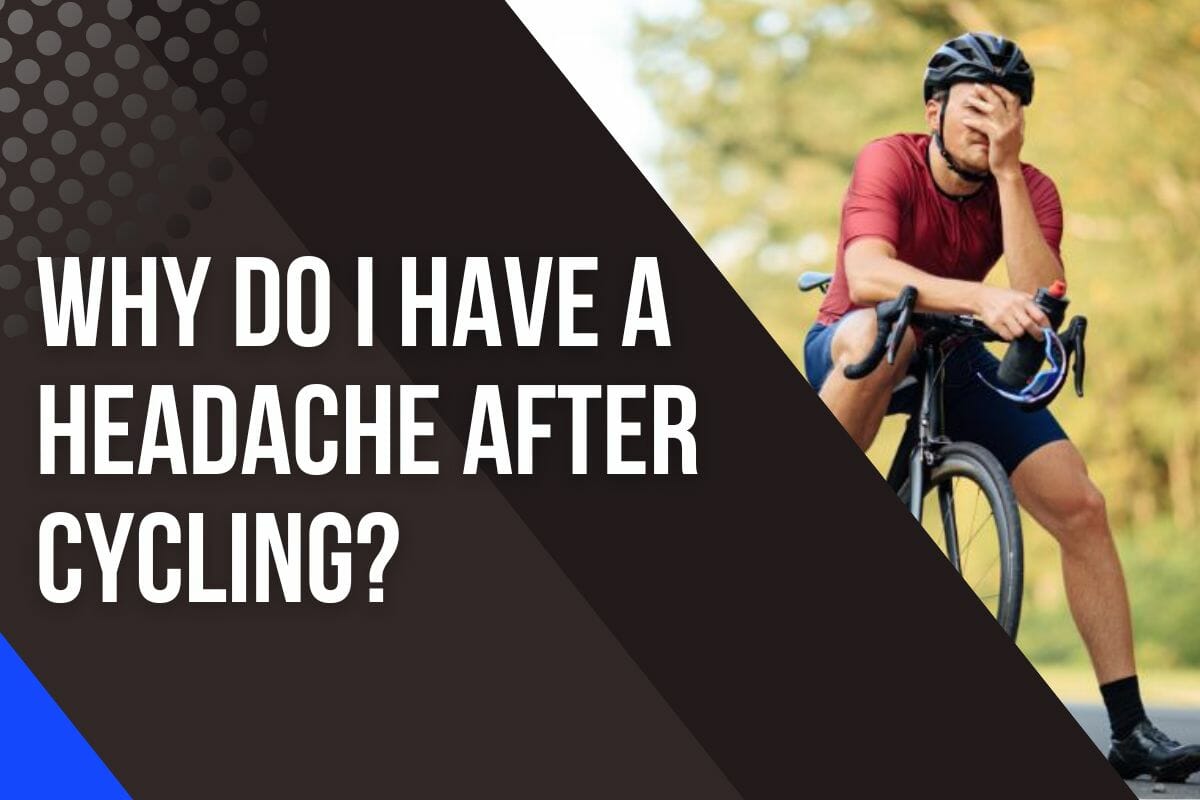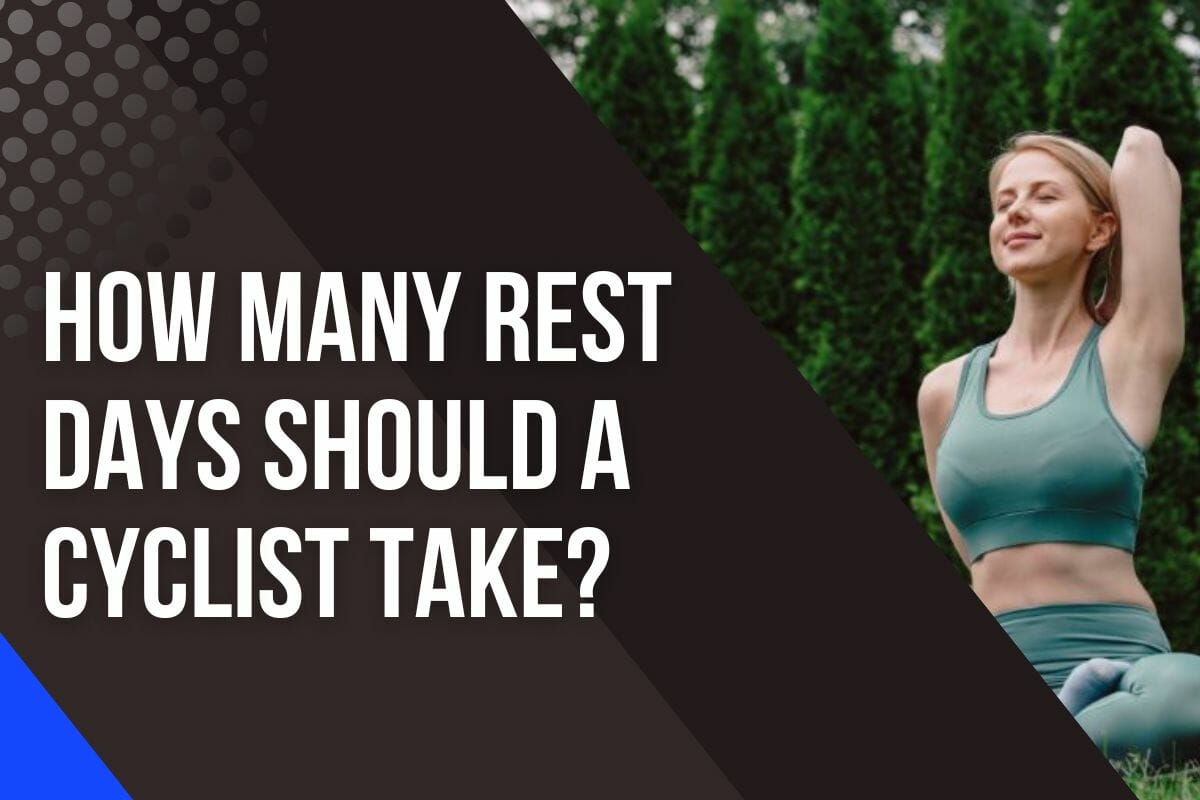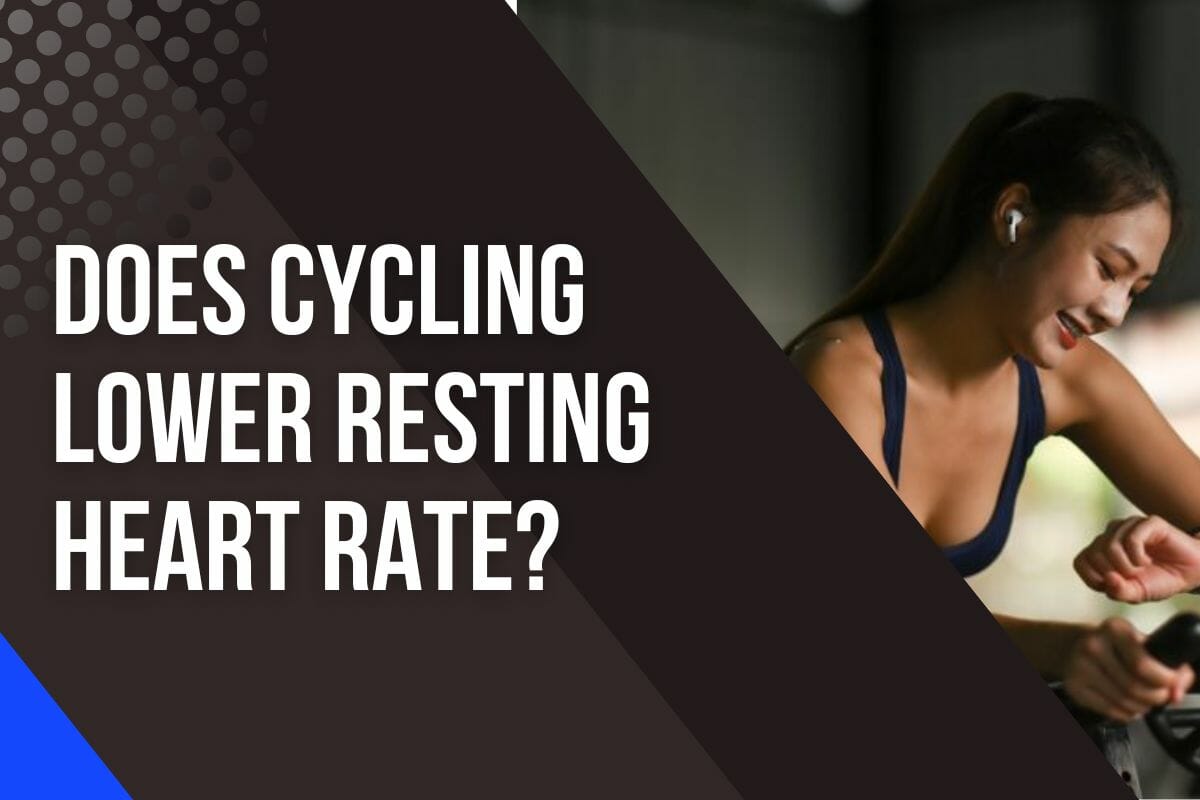Why Do I Have A Headache After Cycling?

Have you ever gone for a bike ride only to find yourself with a pounding headache afterward?
You’re not alone.
While it’s common to feel tired or sore after an intense ride, headaches can be more serious.
In this article, we’ll explore why cyclists may experience headaches and what you can do about them.
We’ll look at some of the most common reasons behind these headaches and discuss ways to help prevent them from happening again in the future.
Finally, we’ll provide tips on how to treat your existing headache so that you can enjoy riding without any discomfort afterward!
Understanding Cycling Headaches
I have been a cyclist for many years and while I love it, I’ve always struggled with headaches after cycling.
It’s like clockwork – as soon as I stop riding, the headache starts.
At first, I didn’t think much of it and just assumed that this was something normal that every cyclist experienced.
But as the headaches became more frequent and painful, I decided to do some research on what could be causing them.

I learned that cycling headaches are quite common among cyclists and can be attributed to several factors such as:
- Increased blood flow to the head and neck during exercise
- Dehydration
- Low blood sugar levels
- Tension in the neck muscles caused by long rides
In addition, those of us who already experience migraines may be particularly susceptible to these types of headaches.
Below, I will explain in more detail each cause of headaches.
Common Causes Of Headaches When Cycling
Now that you understand cycling headaches, let’s take a closer look at the common causes.
Below are the 5 most common causes of headaches when cycling.
1. Dehydration Headache
My friend, John, an avid cyclist, always follows the same routine when he goes on a ride.
He sets out early in the morning with plenty of water and snacks to fuel his journey.
Little did John know that by not paying attention to his hydration levels during the ride, he would be setting himself up for dehydration headaches.
The symptoms of dehydration headaches can start as soon as 30 minutes after exercise has begun.
This is especially true if you are cycling in hot or humid conditions or have been going at a high-intensity level for some time.
Symptoms of dehydration headaches include (1):
- Fatigue
- Dizziness
- Confusion
- Dry mouth and eyes
- Dull or throbbing pain behind the eyes and forehead
- In extreme cases, it can even lead to nausea and vomiting
In order to prevent this kind of dehydration headache from occurring while cycling, it is important to understand how much water your body needs during physical activity.

I usually drink one cup of water every 15-20 minutes throughout my ride.
However, this will vary depending on individual sweat rates and environmental conditions such as heat or humidity.
Additionally, it’s wise to take frequent breaks for rest during long rides so that your body can recover from any fluid losses caused by sweating.
Taking electrolyte supplements before and during rides may also help reduce the severity of common dehydration symptoms like headaches.
2. Tension Headache
Tension headaches are a common type of headache that many cyclists experience.
They can be caused by tension in the neck and scalp muscles, as well as stress or incorrect posture from cycling.
You may also feel pressure around your temples or pain at the base of your skull.

The good news is that there are several ways to prevent and treat tension headaches while cycling.
First, it’s important to practice proper posture on your bike and use proper technique when shifting gears so you don’t strain your neck or shoulders too much.
Taking regular breaks throughout your ride can help relax tense muscles before they cause a headache.
Additionally, gentle stretches can reduce muscle tension in your neck and shoulders which could lead to fewer episodes of headaches.
For more severe cases where medication doesn’t work, speaking with a doctor about other options such as physical therapy or relaxation techniques might be necessary in order to manage chronic tension headaches associated with cycling activities.
3. Exercising In Heat
When cycling or running outdoors during hot weather, it is important to take precautions so that you don’t suffer from a headache or worse.
This is because heat causes the body to lose fluids faster than usual and can cause dehydration and headaches if not monitored properly. (2)
To prepare for exercising in higher temperatures, there are certain steps one can take before leaving home.

Firstly, make sure to hydrate well before, during, and after your ride by drinking plenty of water and electrolyte sports drinks.
Wear light clothing and a safety helmet or hat (like a golf or tennis hat) made out of breathable material like cotton or wool when possible.
Try avoiding direct sunlight at its peak (generally between 10 am – 4 pm) and choosing routes that have lots of trees providing natural shade.
As far as tips go, experts suggest building endurance gradually over time instead of doing too much too soon.
This will reduce the risk of getting injured or dehydrated due to overexertion in extreme conditions.
4. Low Blood Sugar
Low blood glucose levels mean you don’t have enough carbohydrates and calorie intake.
Your brain relies on glucose, and it isn’t receiving enough fuel.
Symptoms of low blood sugar include:
- Throbbing headache
- Nausea
- Confusion
- Dizziness
Always make sure to eat foods high in carbohydrates before starting your ride; this helps keep your blood sugar levels from dropping too low.
Eating small snacks throughout the ride like bananas and energy bars also helps keep your energy levels up.

If symptoms persist despite these measures then speak to a doctor about potentially needing medication or dietary changes to maintain healthier blood glucose levels when engaging in physical activity like cycling.
Taking these precautions should ensure you don’t suffer from headaches after riding your bike again!
5. Migraine
Migraines are severe headaches that involve throbbing pain on one or both sides of the head along with other neurological symptoms.
Migraine triggers vary from person to person, but some common ones include stress, dehydration, lack of sleep, certain foods and drinks (such as alcohol), weather changes, and hormones. (3)
Knowing what your personal triggers are can help you avoid them which may reduce the frequency and severity of migraines.
If intense exercise triggers a migraine, make sure to start slowly, get enough carbohydrates, and stay hydrated.

If you suffer from frequent or debilitating migraines there are medications available that can provide relief.
Talk to your doctor about what might work best for you and how to incorporate these important migraine treatments into your lifestyle.
So What Can I Do To Prevent These Headaches?
Exercise headaches, while not dangerous, can be frustrating and cause riders to experience discomfort while they ride.
To prevent headaches, make sure you’re well hydrated before, during, and after a ride.
Dehydration is one of the main causes of headaches while exercising.
Drink plenty of water throughout the day, particularly when riding in hot weather or if you sweat a lot.

Also, bring along some snacks with electrolytes like bananas or energy gels that will help replace minerals lost through sweating.
Secondly, check your bike setup to ensure it fits correctly and won’t cause any strain on your neck or head while riding.
Be sure your handlebars are leveled with the seat and not too low so you don’t have to tip your head back uncomfortably as you pedal.
Make sure your helmet fits snugly around your forehead without squeezing too tightly – an ill-fitting helmet can also contribute to post-cycling headaches.
Thirdly, in hot weather, dress in breathable fabrics like cotton or synthetic blends that wick away moisture from your body to cool off with minimal effort from you.
Don’t forget to put on a hat and sunscreen to protect yourself from UV radiation too.
Finally, consider taking breaks more often if possible during long rides and take time to stretch regularly to reduce tension buildup in your muscles and joints which may lead to headaches later on.
Migraine-type headaches unfortunately cannot be prevented quite as easily.
If you already have a predisposition for them, it is advised that you talk with your doctor about how best to manage them during exercise periods.
Over-the-counter pain medications might be recommended in order to reduce any intensity of a headache should it occur during a ride.
Making those small changes like eating breakfast before riding and ensuring adequate hydration is essential for all riders.
This will help reduce the potential for exercise-induced headaches since proper preparation helps mitigate
Taking these steps should help keep those post-ride headaches at bay!
The Most Dangerous Headache You Need To Watch Out For
There is a type of headache that we cannot ignore as it is highly dangerous and can lead to death — an aneurysm.
An aneurysm occurs when a blood vessel in the brain develops a weak spot, which can rupture when under pressure or stress. (4)
Intense physical exercise can be a trigger for this rupture, and those who have experienced it describe the worst pain in the world.
Symptoms of an aneurysm include a severe headache near or behind the eyes, double vision, vomiting, seizures, or loss of consciousness.

In cases like these, immediate medical evaluation is needed to catch it early on and determine whether further treatment needs to be carried out such as surgery or medication.
It’s important not to discount any sudden intense headaches as they could indicate considerable danger lurking beneath.
If you suffer from something out of the ordinary, then seeking help right away could save your life — so don’t hesitate to talk to your doctor first before trying anything else!
My Verdict
After cycling, it’s important to take the necessary precautions to avoid headaches.
I’ve realized that if I cycle for too long without taking a break or having sufficient hydration and nutrition, I’m more likely to experience a headache afterward.
In order to prevent this from happening, I make sure to always bring enough water and snacks with me on my rides.
Additionally, wearing a helmet can also help protect against headaches caused by strong wind gusts or other elements while cycling.
If you’re already experiencing a headache after cycling, there are some medications that may be able to provide relief.
However, the best solution is usually rest; allowing your body time to recover before heading out on another ride.





